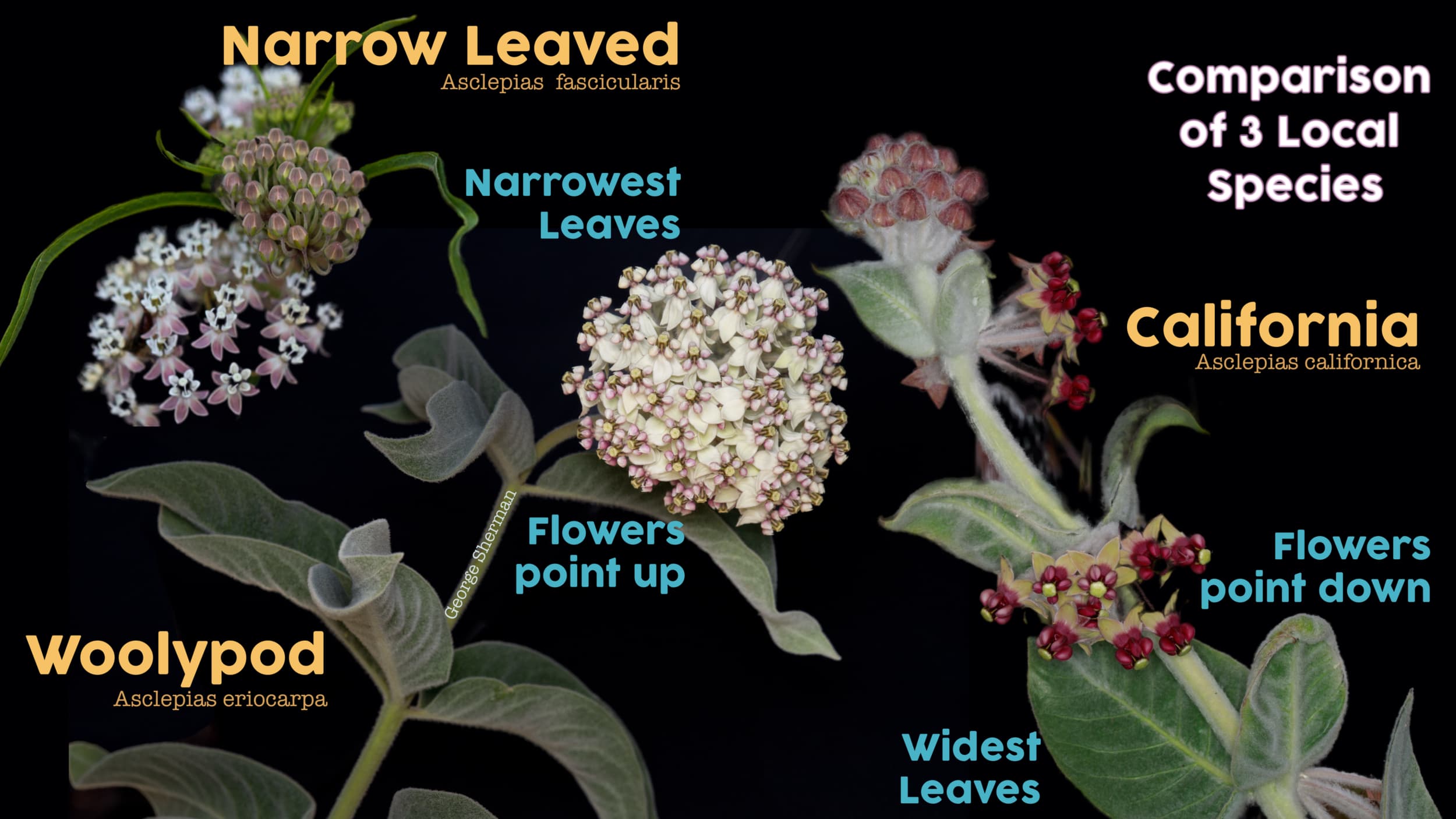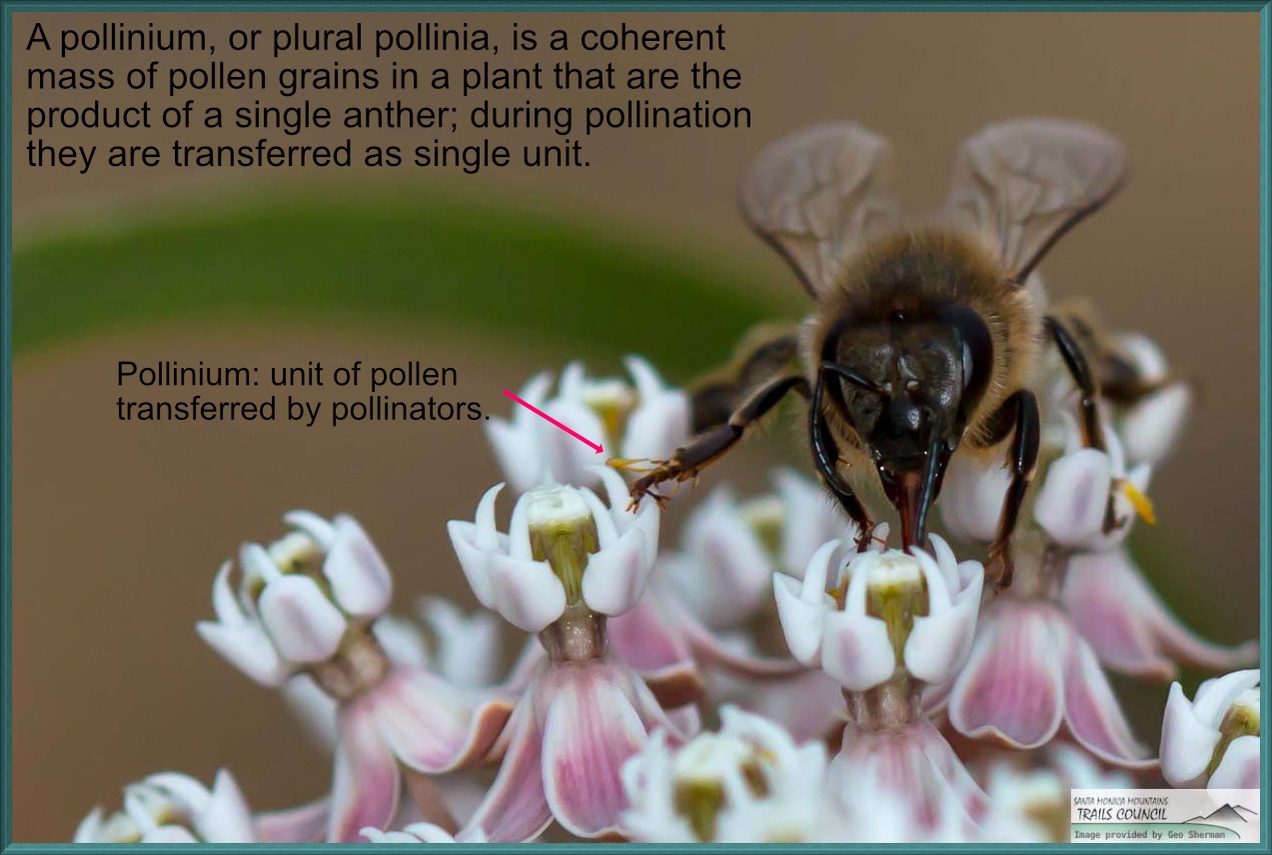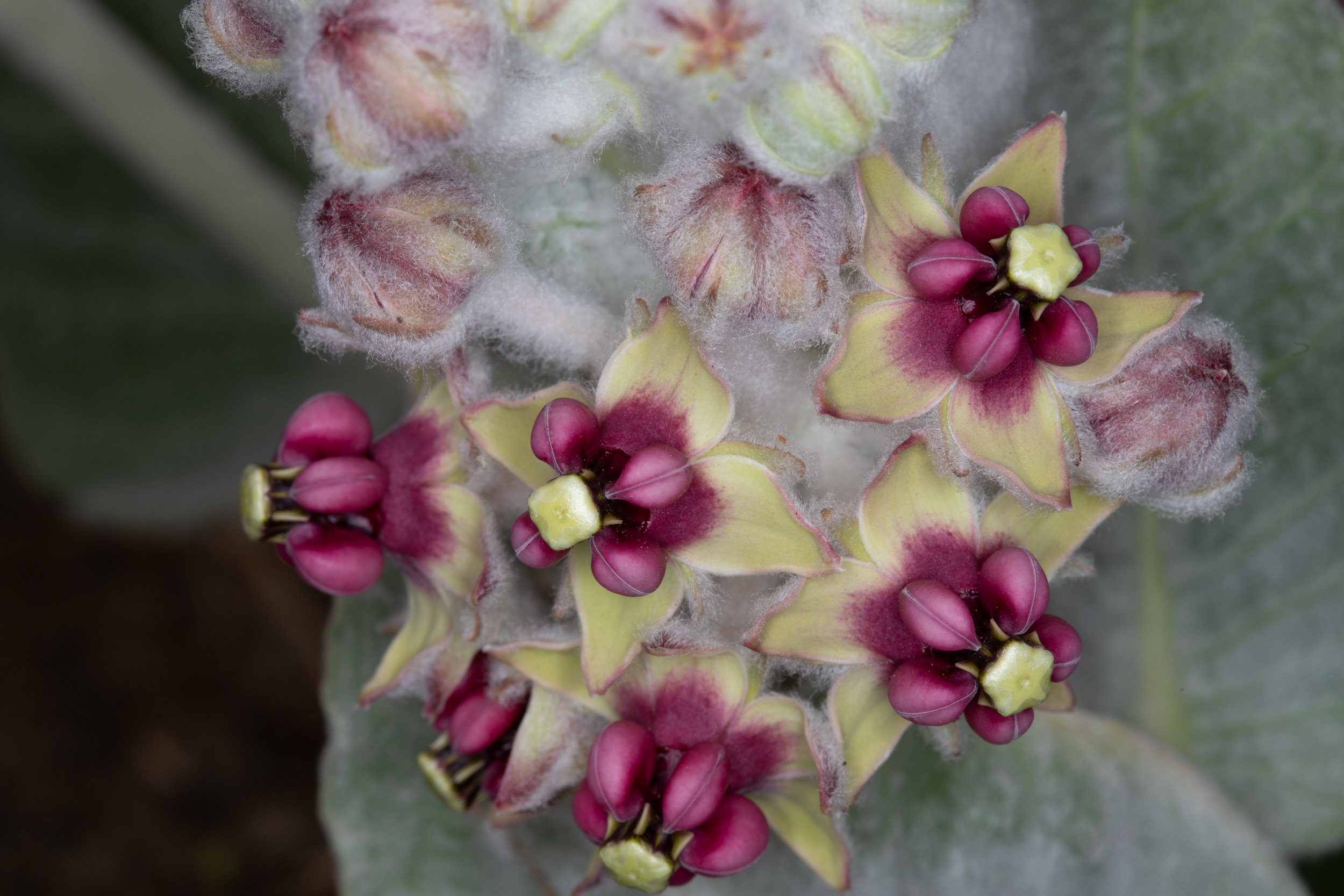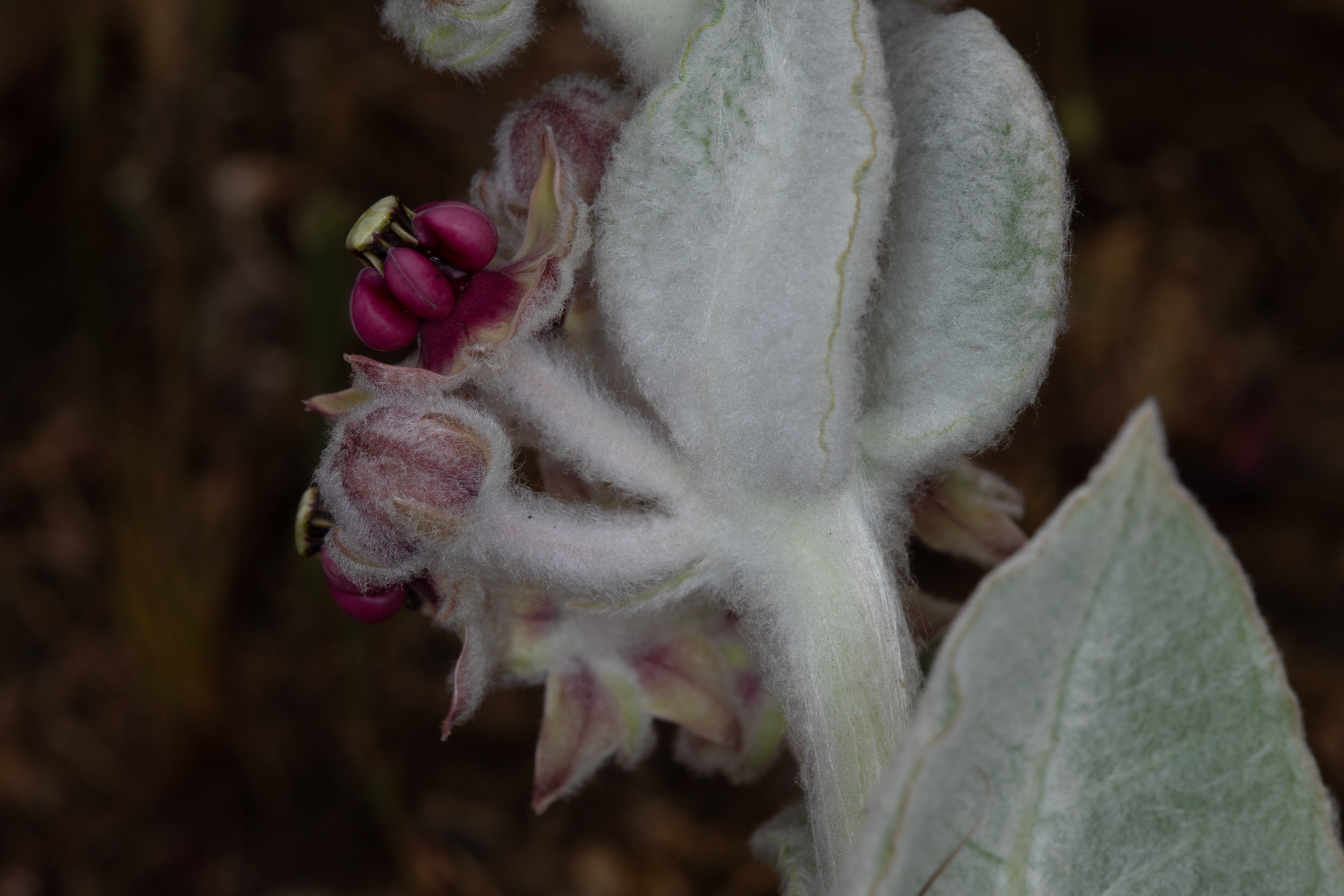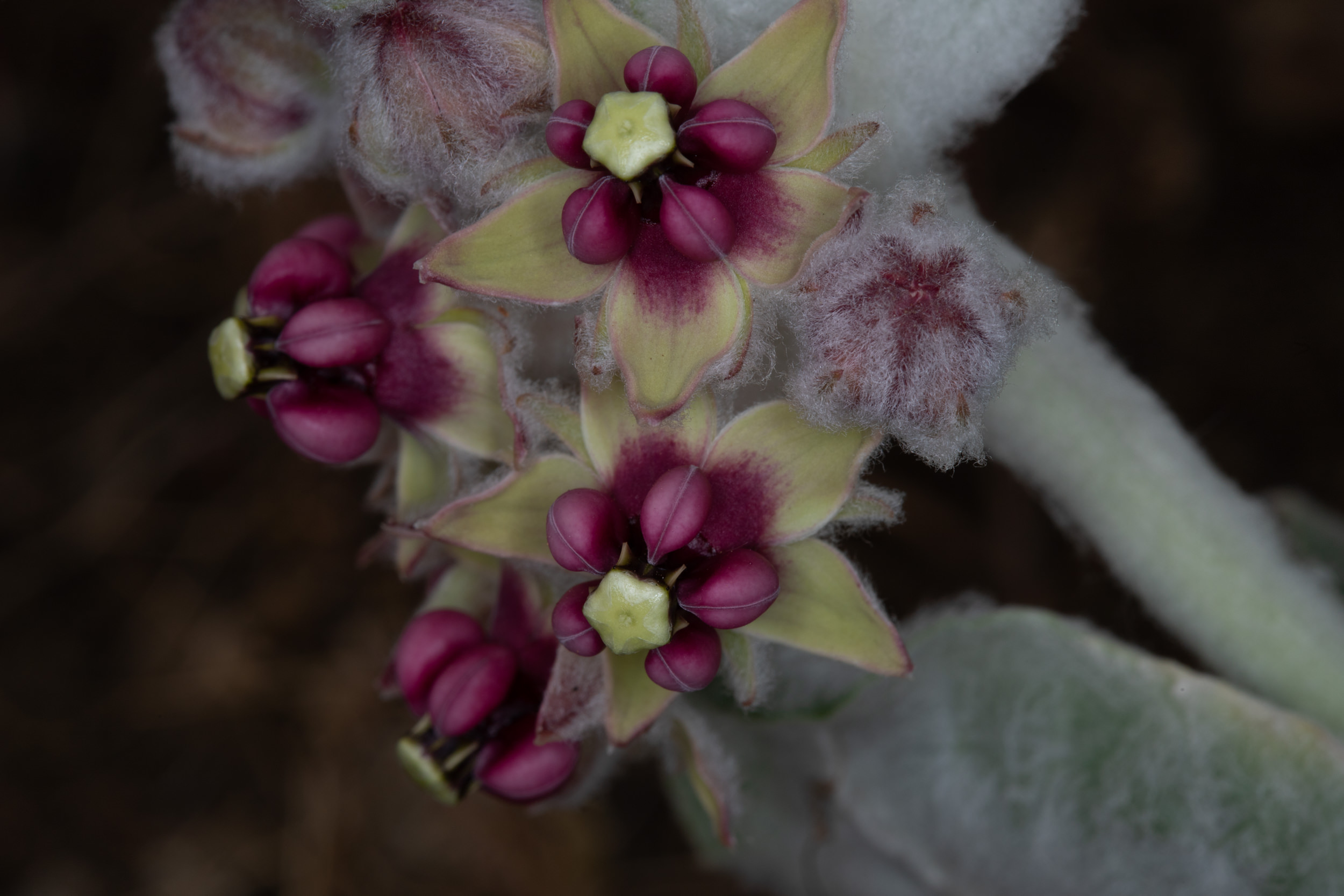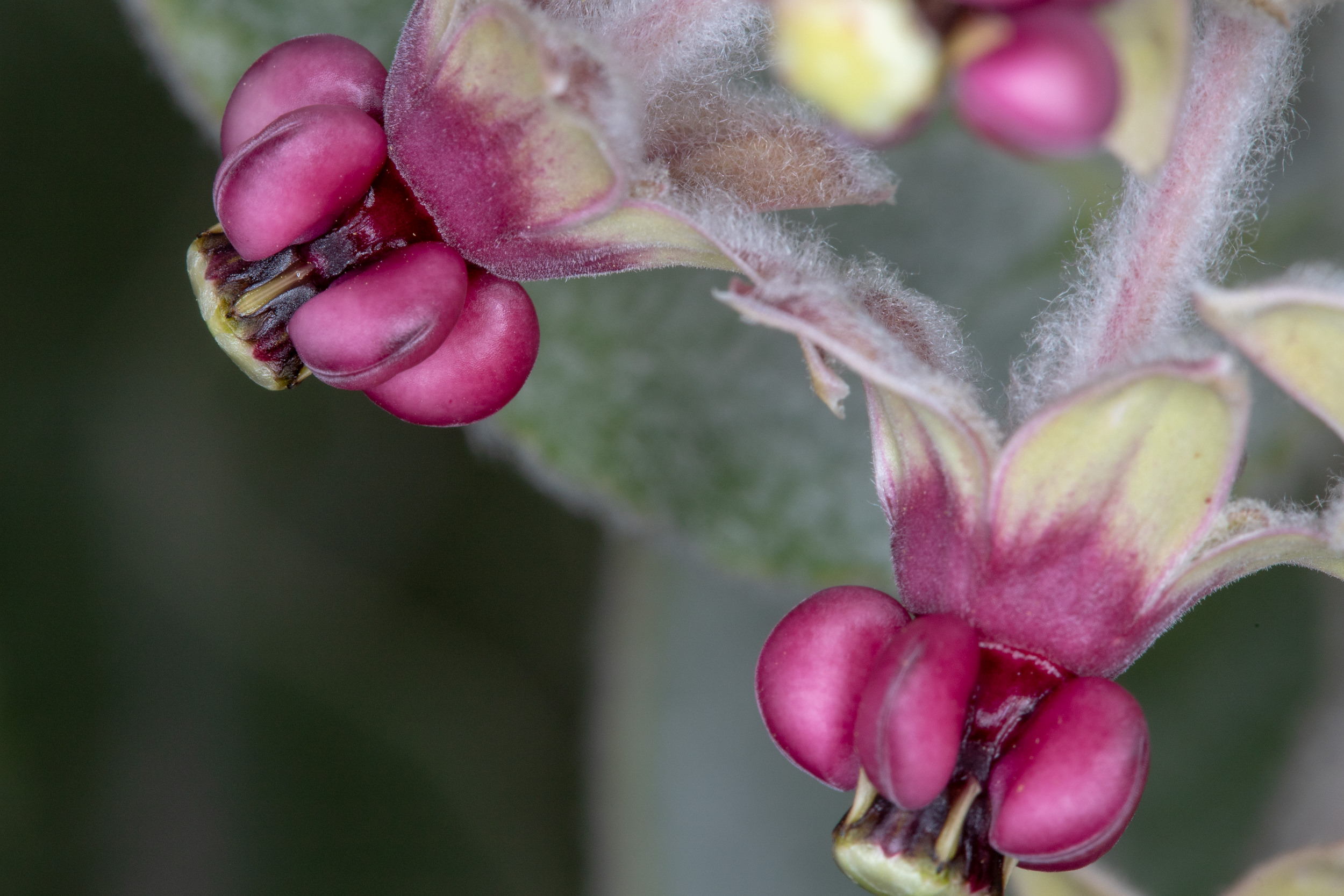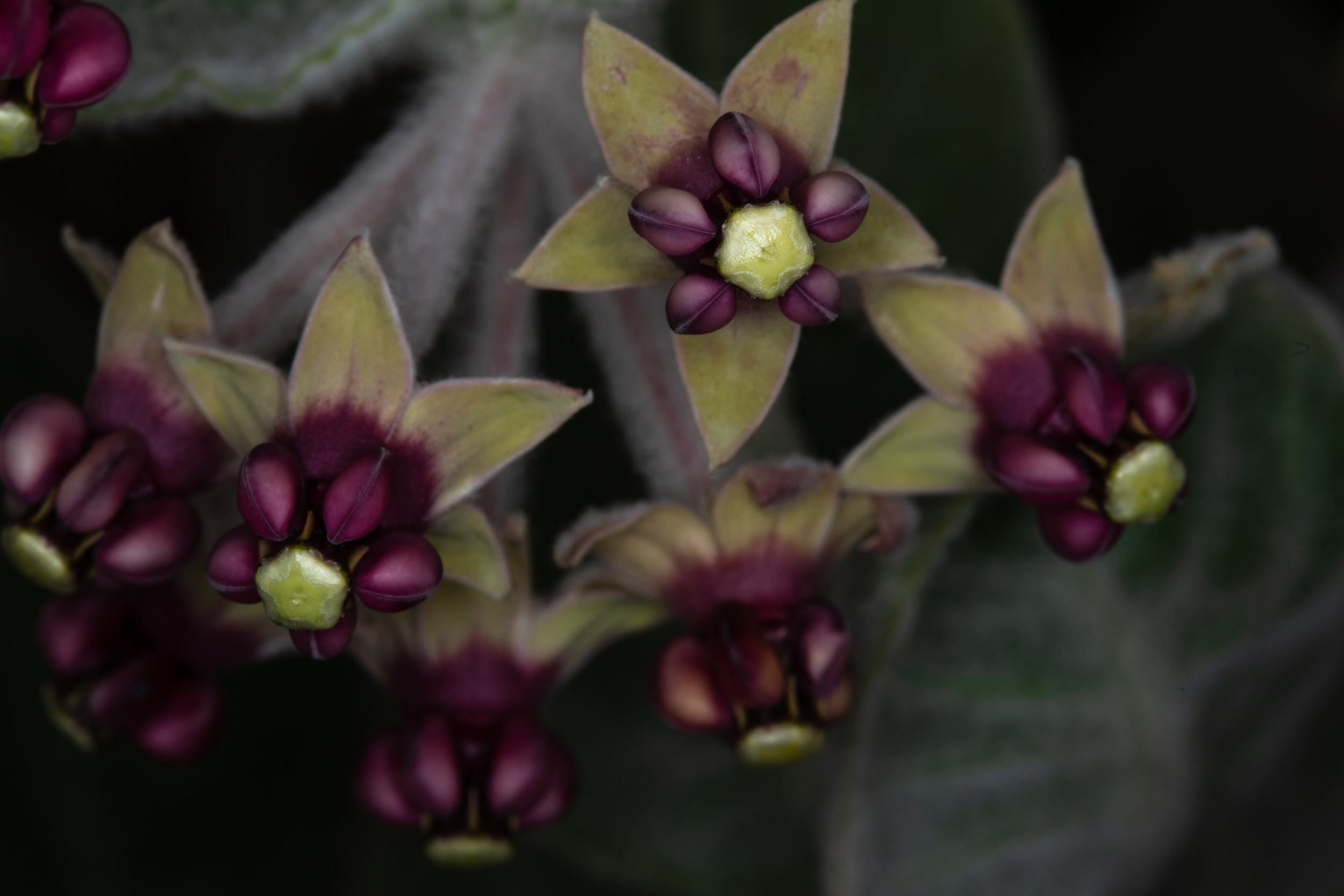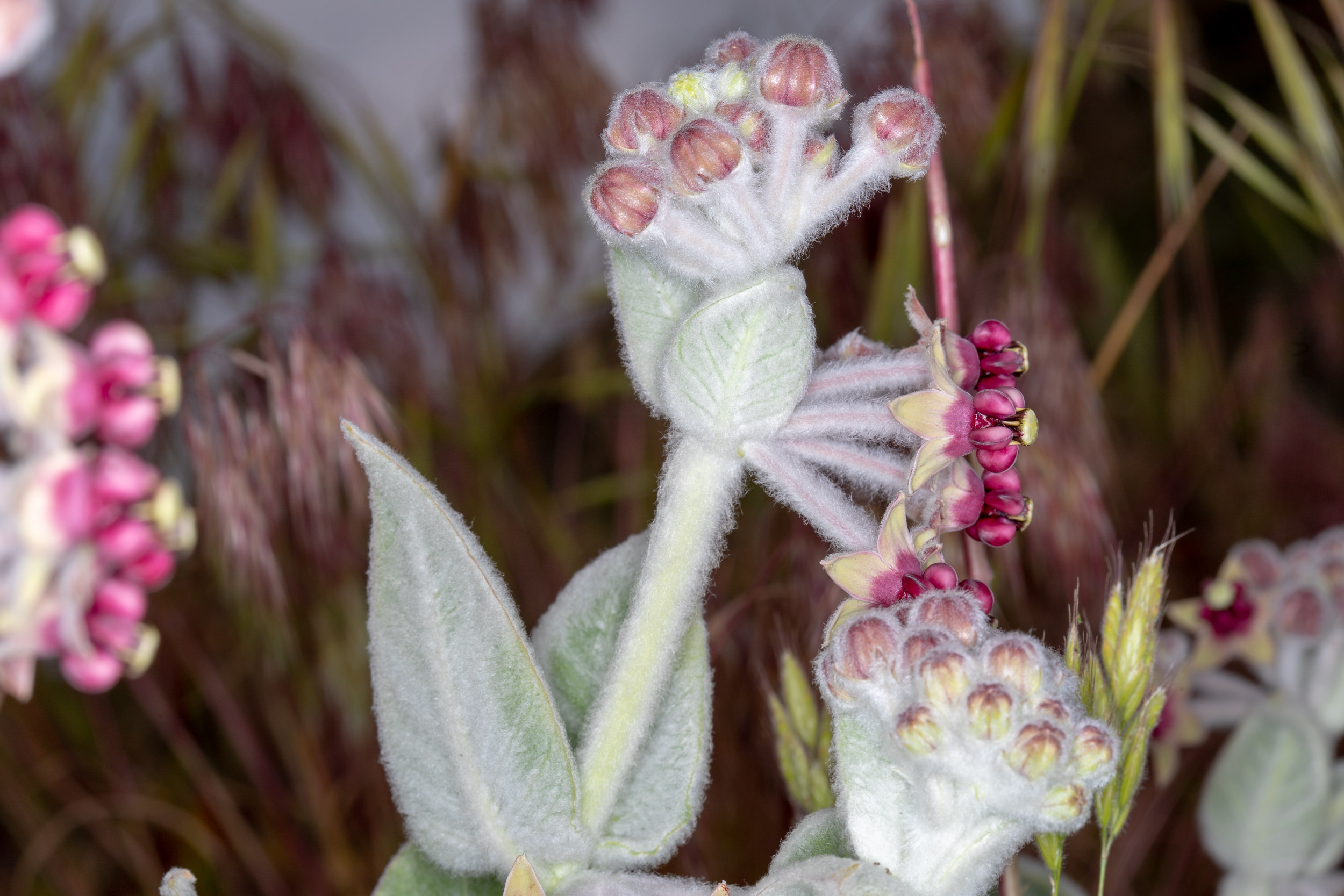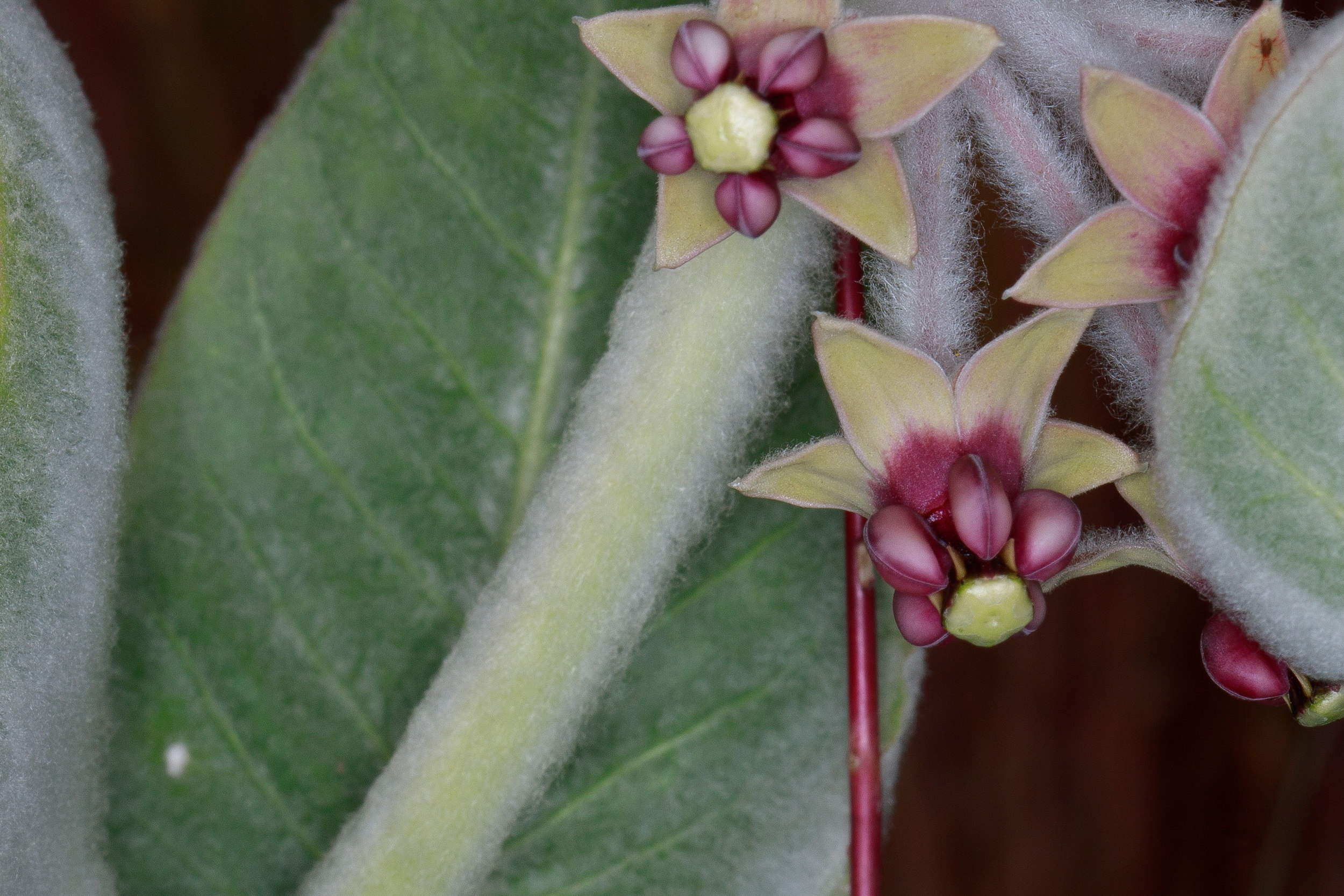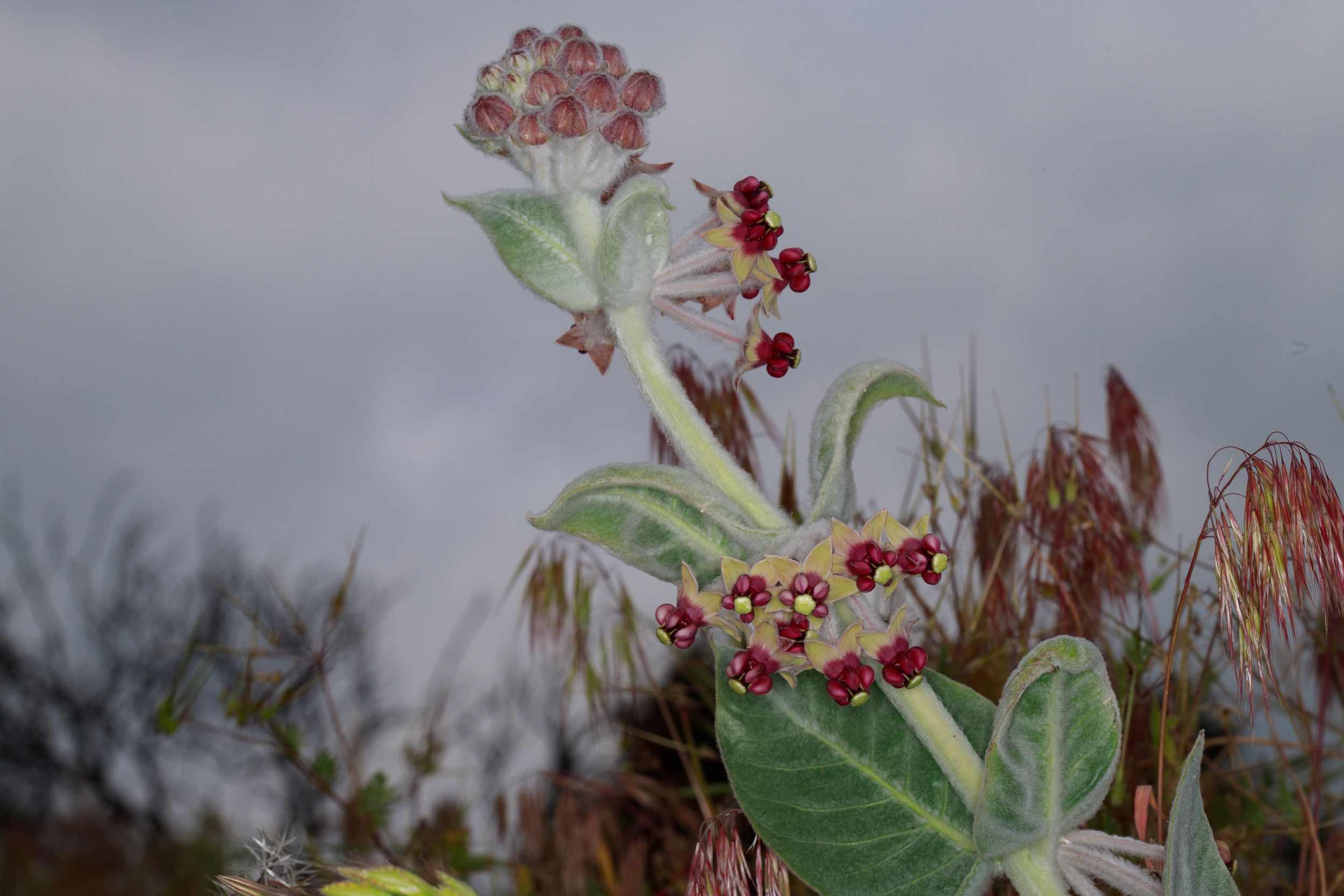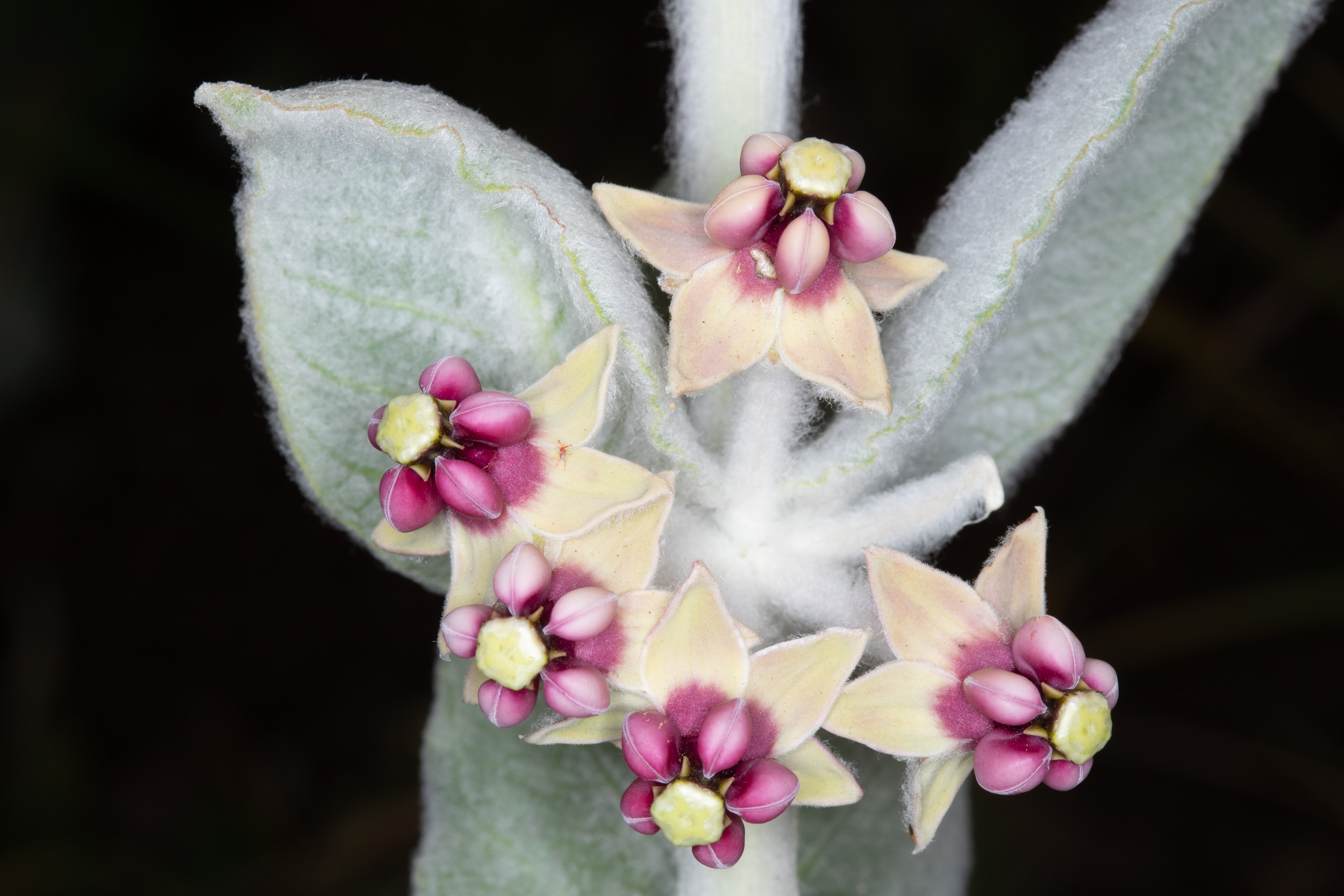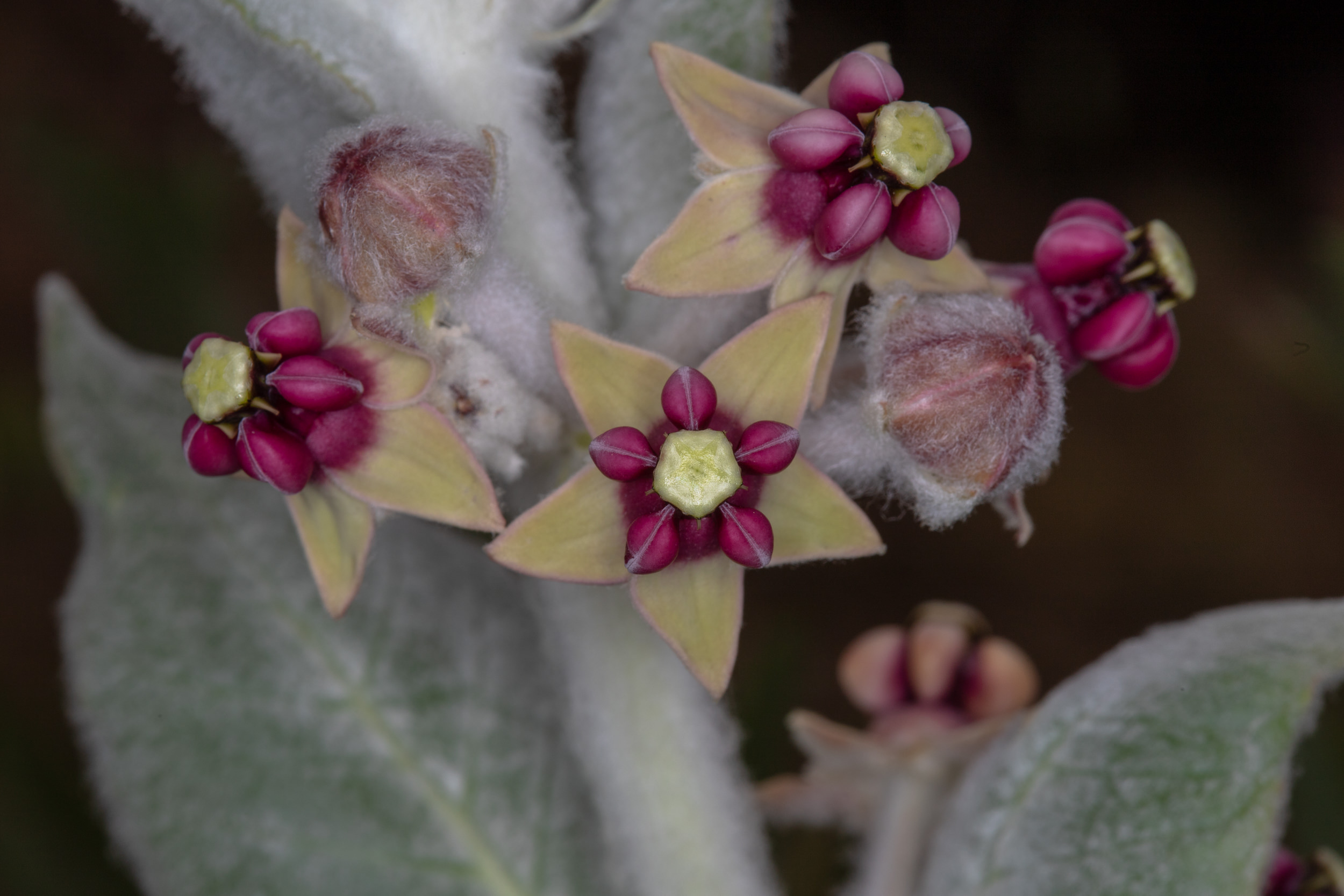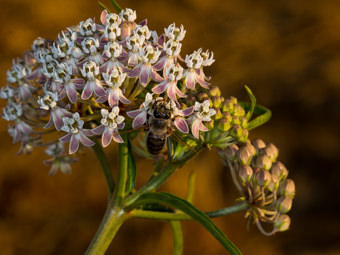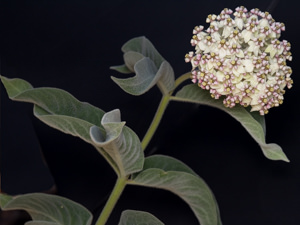California Milkweed
- Asclepias californica
| Common Name(s): | California Milkweed |
| Scientific Name: | Asclepias californica |
| Family: | Apocynaceae (Dogbane) |
| Plant Type: | Perennial |
| Size: | 12-24 inches |
| Habitat: | chaparral, open slopes |
| Blooms: | April to June |
| Fire Response: | Germinate from Seed |
California milkweed, Asclepias californica is one of the most beautiful milkweeds in the Santa Monica Mountains. With deep purple flowers and white to gray fuzzy foliage this plant typically sprawls across the ground rather than growing upwards. Drought tolerant, this California native plant grows in some high desert areas and into Baja California. Like other drought tolerant milkweeds, the stems and leaves are covered with a thick covering of long hairs giving the plant a woolly appearance. This plant can be found growing on slopes in clay and sandy soils.
The indigenous peoples of California had many uses for this plant from cordage to chewing gum; the milky sap within the leaves is flavorful and chewy when cooked.
Asclepias californica is an important and specific Monarch butterfly food plant in nectar and vegetation, and cocoon habitat plant. The alkaloids they ingest from the plant are retained in the butterfly, making it unpalatable to predators. It can cause minor dermatitis in humans. California milkweeds go dormant in fall triggering Monarch Butterflies to migrate south on schedule.
The pollination process is convoluted and just another miracle that Nature has worked out. The petals are some distance away from the reproductive parts of the plant and are what Botanists call "reflexed down". The complicated center of the flower contain the Anthers, Ovaries, Stigma and other parts. The Pollen is a little different from other flowers. Imagine a saddlebag consisting of pollen grains; Botanists define this as a "Pollinium." Moving these "saddlebags" from flower to flower after getting caught on the legs of bees and wasps is how pollination occurs. The process of getting the pollen to the right location is improbable. The pollen dehydrates and changes shape after it is removed from the plant. This change in shape conveniently fits into the stigma slot of a nearby Milkweed. As the pollinator moves from plant to plant, stepping into and out of several slits in the stigma that provide access to the female reproductive organs, pollination can occur.
Response to Fire: ability to resume growth from its roots - they are rhizomes [a continuously growing horizontal underground stem which puts out lateral shoots and adventitious roots at intervals]. Like other milkweeds, a second blooming can occur if timing and conditions after a fire are favorable. [https://www.fs.usda.gov/database/feis/plants/forb/ascspe/all.html]
Link to Calflora.net - the best source of this fascinating information
Name Origin: In Greek, Asclepias translates as “to help or save” in reference to the medicinal qualities of several species. Name for the Greek God of healing Asklepios. The genus Asclepias was published by Carl Linnaeus in 1753. californica refers to the state of California.
Contributed by George Sherman
Featured Plants in the Apocynaceae (Dogbane) Family:
Last modified: July 15 2025 19:29:04.
Number of Images: 11
Image Size Total: 6,426,095
References:
Wildflowers of the Santa Monica Mountains, by Milt McAuleyFlowering Plants: The Santa Monica Mountains, Coastal and Chaparral Regions of Southern California, by Nancy Dale
Chumash Ethnobotany: Plant Knowledge Among the Chumash People, by Jan Timbrook
Leaf Shapes Primer - Botanical Terms for Leaves: - Link
